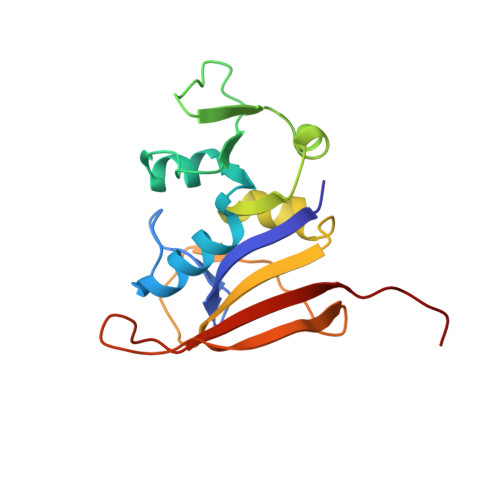Inhibitor design to target a unique feature in the folate pocket of Staphylococcus aureus dihydrofolate reductase.
Muddala, N.P., White, J.C., Nammalwar, B., Pratt, I., Thomas, L.M., Bunce, R.A., Berlin, K.D., Bourne, C.R.(2020) Eur J Med Chem 200: 112412-112412
- PubMed: 32502861
- DOI: https://doi.org/10.1016/j.ejmech.2020.112412
- Primary Citation of Related Structures:
6PR6, 6PR7, 6PR8, 6PR9, 6PRA, 6PRB, 6PRD - PubMed Abstract:
Staphylococcus aureus (Sa) is a serious concern due to increasing resistance to antibiotics. The bacterial dihydrofolate reductase enzyme is effectively inhibited by trimethoprim, a compound with antibacterial activity. Previously, we reported a trimethoprim derivative containing an acryloyl linker and a dihydophthalazine moiety demonstrating increased potency against S. aureus. We have expanded this series and assessed in vitro enzyme inhibition (K i ) and whole cell growth inhibition properties (MIC). Modifications were focused at a chiral carbon within the phthalazine heterocycle, as well as simultaneous modification at positions on the dihydrophthalazine. MIC values increased from 0.0626-0.5 μg/mL into the 0.5-1 μg/mL range when the edge positions were modified with either methyl or methoxy groups. Changes at the chiral carbon affected K i measurements but with little impact on MIC values. Our structural data revealed accommodation of predominantly the S-enantiomer of the inhibitors within the folate-binding pocket. Longer modifications at the chiral carbon, such as p-methylbenzyl, protrude from the pocket into solvent and result in poorer K i values, as do modifications with greater torsional freedom, such as 1-ethylpropyl. The most efficacious K i was 0.7 ± 0.3 nM, obtained with a cyclopropyl derivative containing dimethoxy modifications at the dihydrophthalazine edge. The co-crystal structure revealed an alternative placement of the phthalazine moiety into a shallow surface at the edge of the site that can accommodate either enantiomer of the inhibitor. The current design, therefore, highlights how to engineer specific placement of the inhibitor within this alternative pocket, which in turn maximizes the enzyme inhibitory properties of racemic mixtures.
Organizational Affiliation:
Department of Chemistry, Oklahoma State University, 107 Physical Sciences I, Stillwater, OK, 74078, USA.

















